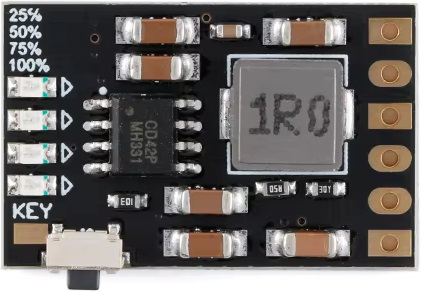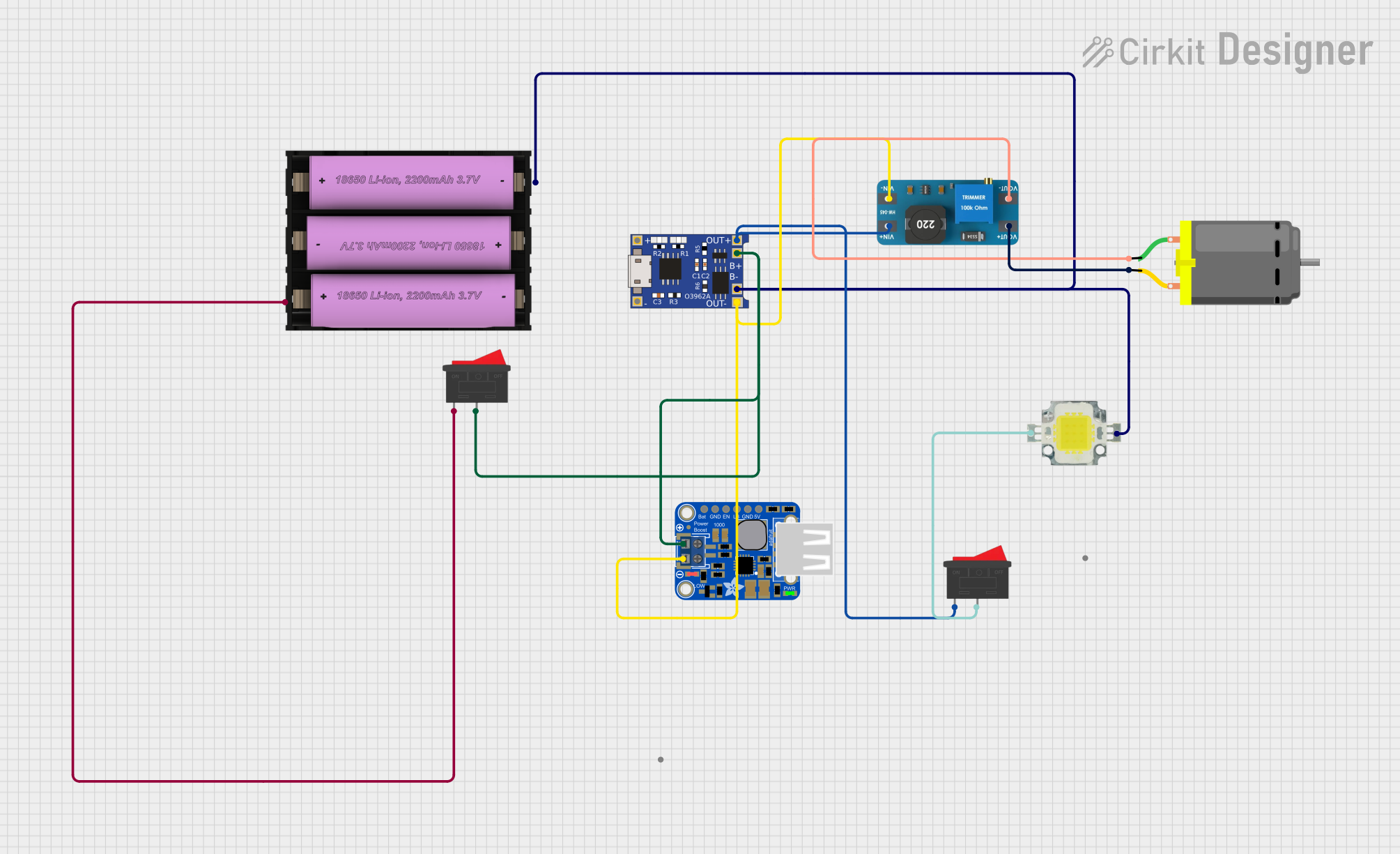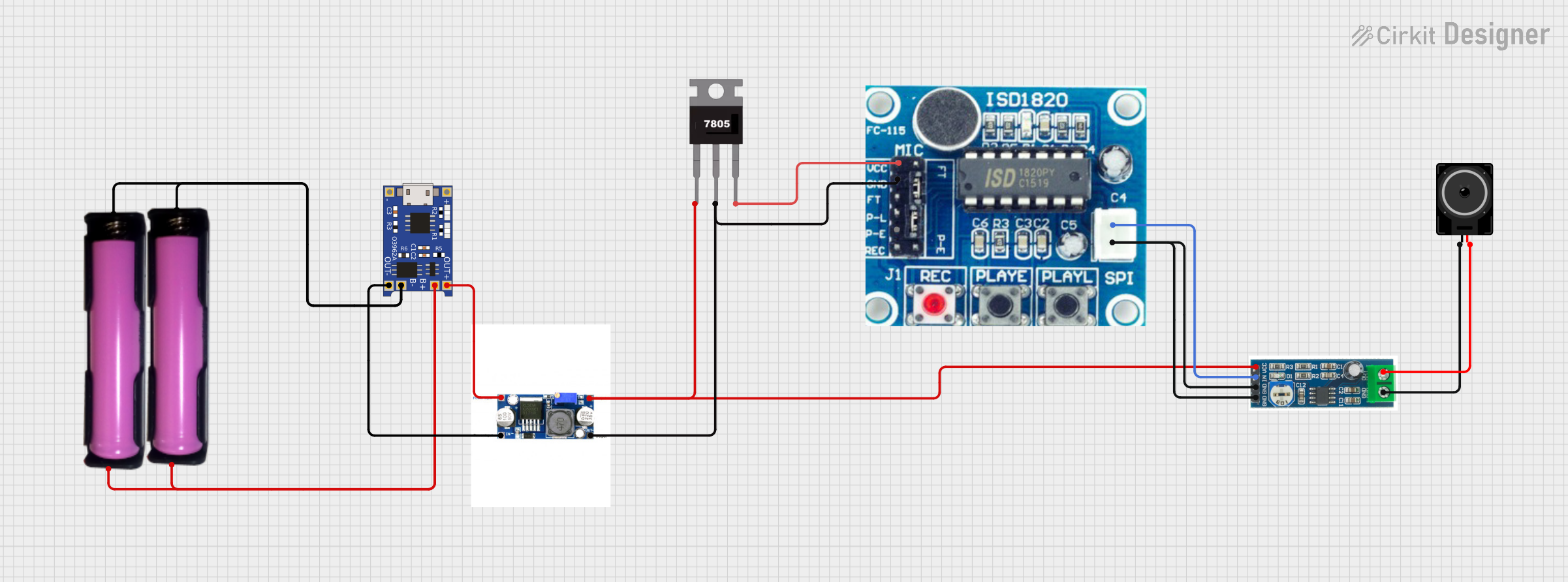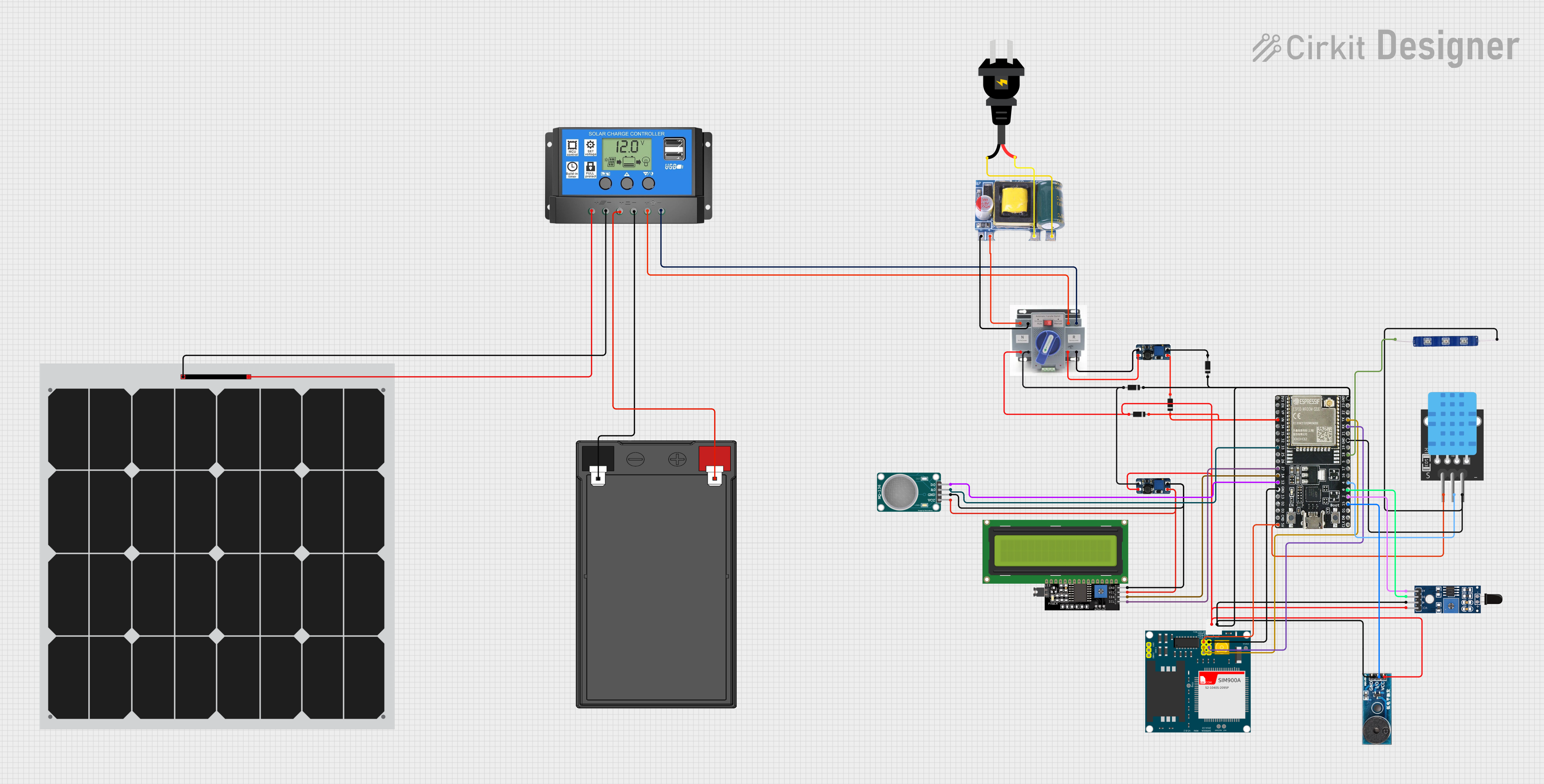
How to Use MH-CD42 Charge/Discharge(boost)/Battery: Examples, Pinouts, and Specs

 Design with MH-CD42 Charge/Discharge(boost)/Battery in Cirkit Designer
Design with MH-CD42 Charge/Discharge(boost)/Battery in Cirkit DesignerIntroduction
The MH-CD42 is a versatile charge/discharge controller designed for efficient battery management. It is capable of charging batteries, discharging them, and boosting voltage levels during discharge to ensure stable and optimal power delivery. This component is widely used in portable electronics, power banks, DIY battery packs, and other applications requiring reliable battery performance and voltage regulation.
Explore Projects Built with MH-CD42 Charge/Discharge(boost)/Battery

 Open Project in Cirkit Designer
Open Project in Cirkit Designer
 Open Project in Cirkit Designer
Open Project in Cirkit Designer
 Open Project in Cirkit Designer
Open Project in Cirkit Designer
 Open Project in Cirkit Designer
Open Project in Cirkit DesignerExplore Projects Built with MH-CD42 Charge/Discharge(boost)/Battery

 Open Project in Cirkit Designer
Open Project in Cirkit Designer
 Open Project in Cirkit Designer
Open Project in Cirkit Designer
 Open Project in Cirkit Designer
Open Project in Cirkit Designer
 Open Project in Cirkit Designer
Open Project in Cirkit DesignerCommon Applications and Use Cases
- Power banks and portable chargers
- DIY battery management systems
- Solar-powered devices
- Backup power supplies
- Low-voltage to high-voltage conversion circuits
Technical Specifications
The MH-CD42 is a compact and efficient module with the following key specifications:
| Parameter | Value |
|---|---|
| Input Voltage Range | 2.5V to 24V |
| Output Voltage Range | 5V to 9V (adjustable via potentiometer) |
| Maximum Output Current | 2A (continuous), 3A (peak) |
| Charging Current | 1A (default, adjustable via resistor) |
| Efficiency | Up to 95% |
| Dimensions | 36mm x 17mm x 6mm |
| Protection Features | Overcharge, over-discharge, short-circuit |
Pin Configuration and Descriptions
The MH-CD42 module has the following pinout:
| Pin Name | Description |
|---|---|
| IN+ | Positive input terminal for charging (connect to power source, e.g., USB 5V) |
| IN- | Negative input terminal for charging (connect to ground of power source) |
| OUT+ | Positive output terminal for load connection |
| OUT- | Negative output terminal for load connection |
| B+ | Positive terminal for battery connection |
| B- | Negative terminal for battery connection |
Usage Instructions
How to Use the MH-CD42 in a Circuit
Connecting the Battery:
- Connect the positive terminal of the battery to the
B+pin. - Connect the negative terminal of the battery to the
B-pin. - Ensure the battery voltage is within the supported range (2.5V to 24V).
- Connect the positive terminal of the battery to the
Connecting the Input Power Source:
- Connect the positive terminal of the input power source (e.g., USB 5V) to the
IN+pin. - Connect the negative terminal of the input power source to the
IN-pin.
- Connect the positive terminal of the input power source (e.g., USB 5V) to the
Connecting the Load:
- Connect the positive terminal of the load to the
OUT+pin. - Connect the negative terminal of the load to the
OUT-pin.
- Connect the positive terminal of the load to the
Adjusting the Output Voltage:
- Use the onboard potentiometer to adjust the output voltage.
- Turn the potentiometer clockwise to increase the voltage and counterclockwise to decrease it.
- Use a multimeter to measure the output voltage while adjusting.
Testing the Circuit:
- Power the module using the input source.
- Verify that the battery charges correctly and the load receives the desired output voltage.
Important Considerations and Best Practices
- Heat Dissipation: The module may heat up during operation, especially at high currents. Ensure proper ventilation or use a heatsink if necessary.
- Battery Protection: Use batteries with built-in protection circuits to prevent overcharging or over-discharging.
- Input Voltage: Ensure the input voltage is within the specified range to avoid damaging the module.
- Output Current: Do not exceed the maximum output current rating (2A continuous, 3A peak) to prevent overheating or damage.
Example: Using MH-CD42 with Arduino UNO
The MH-CD42 can be used to power an Arduino UNO by boosting a low-voltage battery to 5V. Below is an example circuit and code:
Circuit Connections
- Connect a 3.7V Li-ion battery to the
B+andB-pins of the MH-CD42. - Adjust the output voltage to 5V using the potentiometer.
- Connect the
OUT+pin to the Arduino UNO's5Vpin. - Connect the
OUT-pin to the Arduino UNO'sGNDpin.
Example Code
// Example code to blink an LED on Arduino UNO powered by MH-CD42
// Ensure the MH-CD42 output is set to 5V before connecting to Arduino
const int ledPin = 13; // Pin connected to the onboard LED
void setup() {
pinMode(ledPin, OUTPUT); // Set the LED pin as an output
}
void loop() {
digitalWrite(ledPin, HIGH); // Turn the LED on
delay(1000); // Wait for 1 second
digitalWrite(ledPin, LOW); // Turn the LED off
delay(1000); // Wait for 1 second
}
Troubleshooting and FAQs
Common Issues and Solutions
Module Overheating:
- Cause: Excessive current draw or poor ventilation.
- Solution: Reduce the load current or improve heat dissipation with a heatsink.
Battery Not Charging:
- Cause: Incorrect battery connection or input voltage too low.
- Solution: Verify the battery connections and ensure the input voltage is within the specified range.
Output Voltage Not Stable:
- Cause: Load exceeds the module's current capacity.
- Solution: Reduce the load or use a higher-capacity module.
No Output Voltage:
- Cause: Incorrect wiring or damaged module.
- Solution: Double-check all connections and replace the module if necessary.
FAQs
Can the MH-CD42 charge multiple batteries in series?
No, the module is designed for single-cell batteries. For multiple cells, use a dedicated battery management system (BMS).What is the default output voltage of the module?
The default output voltage is typically set to 5V but can be adjusted using the potentiometer.Can I use the MH-CD42 with a solar panel?
Yes, as long as the solar panel's output voltage is within the module's input range (2.5V to 24V).Is the module safe for long-term use?
Yes, the MH-CD42 includes protection features such as overcharge, over-discharge, and short-circuit protection, making it safe for long-term use when used within its specifications.